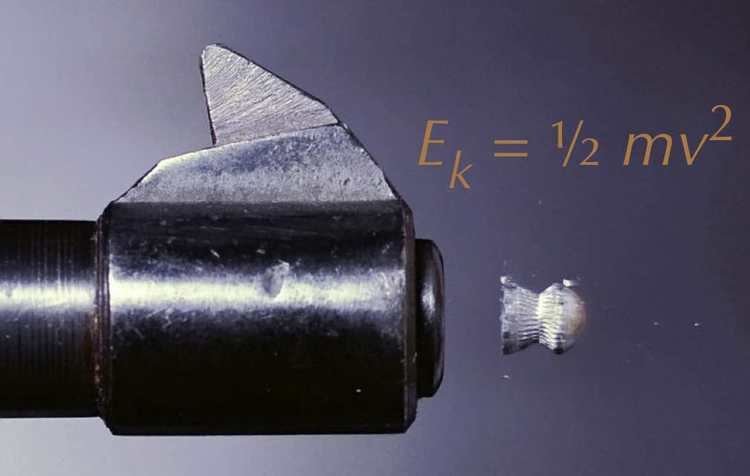 | ||
Muzzle energy is the kinetic energy of a bullet as it is expelled from the muzzle of a firearm. It is often used as a rough indication of the destructive potential of a given firearm or load. The heavier the bullet and especially the faster it moves, the higher its muzzle energy and the more damage it will do.
Contents
The general formula for the kinetic energy is
where
v is the velocity of the bulletm is the mass of the bullet.A subsonic variant of ammunition that would otherwise be supersonic has its velocity limited to less than the speed of sound, i.e. v is fixed at around 300 metres per second (980 ft/s). For ammunition with this limitation the muzzle energy is variable only with respect to the bullet mass m.
Calculating muzzle energy
The bullet energy, remaining energy, down range energy, and impact energy of a projectile may also be calculated using the above formulas.
The first of the two US formulas can be simplified in conformance with US practice to:
E = (M x V²) ÷ K where K = 450,435 and is derived from (2 x 32.1739 x 7000), M is the weight of the projectile, in grains, V is the velocity in feet per second and E is the energy in foot pounds.It must be stressed that muzzle energy is dependent upon the factors previously listed and that even velocity is highly variable depending upon the length of the barrel a projectile is fired from. Also note that the muzzle energy is only an upper limit for how much energy is transmitted to the target and that the effects of a ballistic trauma depend on several other factors as well. While the above list mentions some averages, there is wide variation in commercial ammunition. A 180 grain bullet fired from .357 magnum handgun can achieve a muzzle energy of 580 foot-pounds. A 110 grain bullet fired from the same gun might only achieve 400 foot-pounds of muzzle energy, depending upon the manufacture of the cartridge. Some .45 Colt ammunition can produce 1,200 foot-pounds of muzzle energy, far in excess of the average listed above.
Legal requirements on muzzle energy
Some jurisdictions stipulate minimum muzzle energies for hunting. For example, in Denmark rifle ammunition used for hunting the largest types of game there such as red deer must 100 m down range have a kinetic energy E100 of at least 2700 J and a bullet mass of at least 9 g or alternatively an E100 of at least 2000 J and a bullet mass of at least 10 g. Namibia specifies three levels of minimum muzzle energy for hunting, 1350 J for game such as springbok, 2700 J for game such as hartebeest and 5400 J for big game, together with a minimum caliber of 7 mm.
In Germany airsoft guns with a muzzle energy of no more than 0.5 J are exempt from the gun law, while air guns with a muzzle energy of no more than 7.5 J may be acquired without a firearms license.
